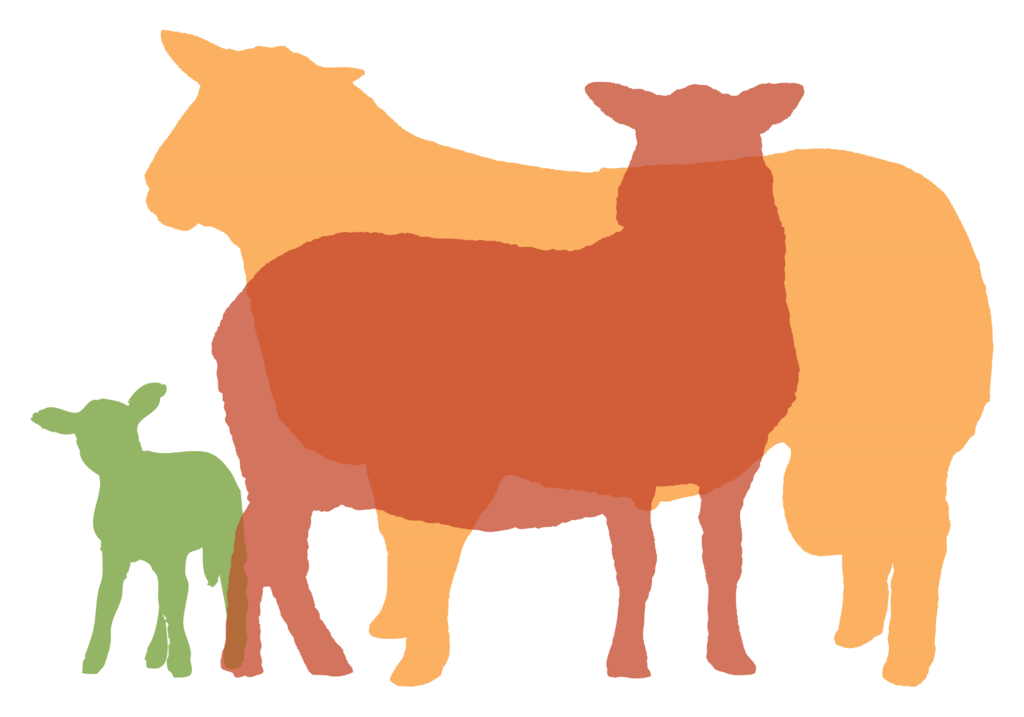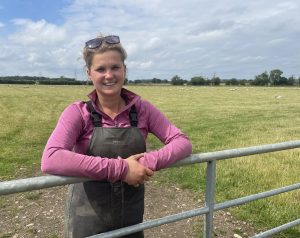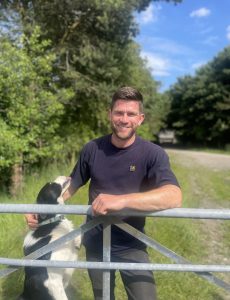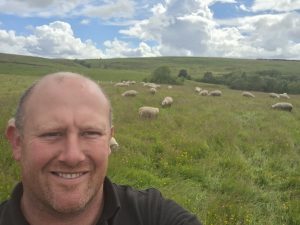Shared by kind permission of The Scottish Farmer
BOOSTED FARM output and profitability has been the result of improved livestock performance at Girtridge Farm near Dundonald – who took part in the monitor farm programme for north Ayrshire.
John Howie farms 170 hectares at Girtridge Farm, in partnership with his mum Margaret and sister Mary. Having studied accounts and finance at Strathclyde University, John came back to the farm with an understanding of figures and finance but was less confident about the application of new farm management techniques.
Over the last three years, the family has embraced the monitor project wholeheartedly and have raised the technical performance of their livestock enterprises by introducing rotational grazing, modifying their cattle finishing system and changing the structure of their sheep flock; all leading to improvements in both output, and profitability.
Girtridge Farm is one of nine monitor farms established in Scotland as part of a joint initiative by QMS and AHDB Cereals & Oilseeds, with funding from the Scottish Government. The aim of the monitor farm programme is to help improve the productivity, profitability and sustainability of Scottish farm businesses.
Speaking at the final meeting of the three year monitor farm programme (28 February), John Howie told attendants that involvement in the initiative had helped him to make informed business decisions. As a result, net farm output has increased by 66%, whilst gross profit has risen from -12% of output to +12% of output. The farms carbon footprint has also been reduced by 26%.
John Howie commented; “I feel the business is in a better position,” he said. “Before, the farm was a family farm and that’s fine, but now it’s a business. We look at the farm’s potential and maximise output and profit off every acre.”
“Being part of the monitor farm process has been challenging but rewarding. It has pushed me to make changes happen but has also given me the confidence to see them through,” added John.
Since the start of the programme the focus of the business has been on expanding the ewe flock and improving efficiencies across the 220-250 head of finishing cattle.
Rotational grazing, combined with routine liming and reseeding, has helped boost grassland performance, enabling ewe numbers to be increased from 135 to 500. This has led to a 46% increase in stocking rates to 3.75LU/ha. Lambs have also achieved daily live weight gains of 377g/day on grass alone to eight weeks.
John has also undertaken a full change in sheep breeding policy to make better use of grass. This has involved changing from Mule and Texel x ewes to predominately Aberfield x Lleyn animals. Following a trial with different terminal sires, the business has also shifted towards using Abermax tups, rather than Suffolks or Texels.
John explained: “Looking at the death register and 100 day growth rates, the Suffolks were growing the fastest, but had the highest losses. The Abermax had slightly lower growth, but less losses. That’s why we went down the Abermax route.”
Silage quality has also improved, thanks to having younger leys and cutting earlier. At 11.8ME and 15% crude protein, this has helped reduce the cost of the beef finisher ration, leading to his feeders margin increasing by 0.12p/head/day. Improved ventilation in the cattle sheds and better water provision has also boosted intakes and raised growth rates. John is also choosing younger, heavier stores so they get away quicker. All this has helped lower age at slaughter from around 27 months to 22 months.
With John providing the majority of the labour on the farm himself, cattle handling had always been an issue, meaning that management tasks to help assess performance weren’t always prioritsed. Through the Monitor Farm Scotland project, the community group and management group co-designed a new cattle handling set up, that the Howies have since built. This new cattle handling set-up includes weigh bars which means that they are now able to track growth rates. Combining this with EID management tags and a UHF reader also allows paperless, automatic recording and tracking.
John said: “As we finish cattle, everyone asks which animals are best and it’s an impossible question to answer. By recording daily live weight gains, we can track feed conversion efficiencies and identify the poorer performers in our herd. That will influence the type of cattle we buy or sell. It’s about refining our system and being really efficient, especially when margins are so tight.”
As a direct result of advice at one of the monitor farm meetings, John now records and monitors faecal egg counts as a tool for deciding when to treat for worms. Reducing the amount of anthelmintic required has significantly reduced costs, including labour.
Monitor Farm facilitator, Raymond Crerar from SAC Consulting said there is no doubt that the business is in a better position.
“John has significantly increased his output with minimal additional capital expenditure,” said Raymond. “He’s still farming the same land, but the efficiencies we’ve made has allowed him to increase output and profitability on the same fixed cost structure.”
However, improving technical efficiency of the livestock enterprise was only one side of the Monitor Farm project at Girtridge
Using benchmarking data generated through the Monitor Farm programme, the group was able to highlight the key barriers and threats to profitable livestock production, as well as share some of the learnings and solutions that they had found.
Hazel Muir, chair of the North Ayrshire management group commented; “The monitor farm programme has been fantastic, I have enjoyed the diversity of meetings and feel the community has benefited from interacting with others and widening their network.”
“As a member of the Monitor Farm Business group I have started to benchmark our farms financial and technical performance. As a group we have openly put our figures out there and visited each other farms. We have now developed a close network, where we now openly communicate with each other and advise changes we think could be made. Due to the programme I personally have noticed my confidence grow and this is invaluable.”



